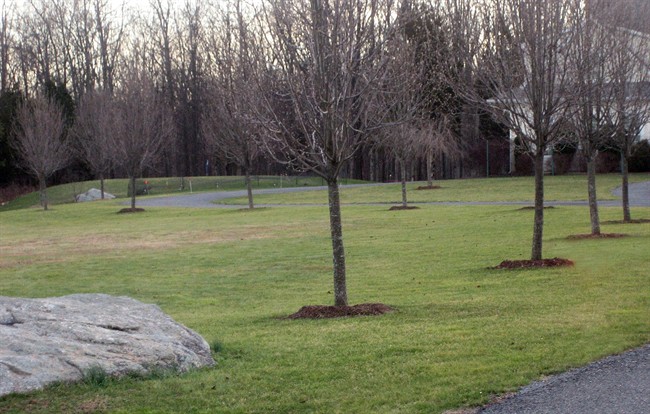Mulching can be one of the best things you do for your trees and shrubs. It also can be one of the worst things you do for your trees and shrubs. First, let’s get our definitions in order.

“Mulch” is anything with which you blanket the ground, be it straw, black plastic, pebbles, even the marbles I once saw blanketing a portion of ground in a contemporary California landscape. Any of these materials, when spread beneath a tree or shrub, will keep lawn and, hence, lawnmowers at bay. Mulches also help conserve water by slowing evaporation from the soil surface. But that’s about where the similarity among mulches ends.
Many mulches can enhance water use, for instance, by softening the impact of raindrops, so the soil surface stays loose, open and ready to absorb water. Rule out black plastic for this purpose, however. Another downside to black plastic is that it can leave roots gasping for oxygen.
—
MORE BENEFITS OF MULCH
Mulches can contribute directly to a tree or shrub’s nutrition and health. As any organic material (wood chips, straw or leaves) decomposes, it releases nutrients and also helps make plant foodstuffs already in the soil more accessible to roots. Rule out pebbles, marbles or black plastic for this.
As far as a tree or shrub is concerned, organic materials are obviously the best mulch.
- Buzz kill? Gen Z less interested in coffee than older Canadians, survey shows
- Body Shop Canada considers sale as demand outpaces inventory
- Indigo nears privatization but experts warn turnaround won’t be ‘quick fix’
- Naloxone-resistant street drug linked to 9 deaths in Eastern Canada seized in Alberta
And besides their benefits for plants and the soil, they are usually inexpensive or free.
Still, mulching even with an organic material can be one of the worst things you do for your tree or shrubs.
—
POSSIBLE DARK SIDES
Potential Problem No. 1 is that mice simply love the cushiony, moist environment created by organic mulches. Furthermore, mice like to gnaw on the bark of living trees and shrubs, so a thick mulch piled up against woody plant stems provides these furry creatures with both food and lodging.
Since plants transport minerals and sugars through the bark, mouse feeding can kill a tree or shrub. An obvious route around this mouse problem is to keep organic mulches away from the bases of plants. A ring of bare soil a few inches in diameter around the base of a tree or shrub is sufficient to cause Stuart Little to think twice about scurrying out, exposed to the searching eyes of hawks and other predators, for a bite to eat. A cylinder of hardware cloth there provides further insurance. Potential Problem No. 2 with using an organic mulch is that it can bring on rot if piled up against trunks and stems. Again, bypass this problem by keeping the mulch a few inches away from trunks and stems.
—
AESTHETICS
One last quality of mulches is their contribution to the appearance of a landscape or planting. Again, rule out black plastic for this purpose.
True, plastic can be covered with something like wood chips, but coverings eventually slide off to expose the plastic.
Other mulches each have a place in helping to complete a picture: wood chips or leaves in a woodland setting, cocoa bean hulls informal shrubbery, marbles in … where?

Comments